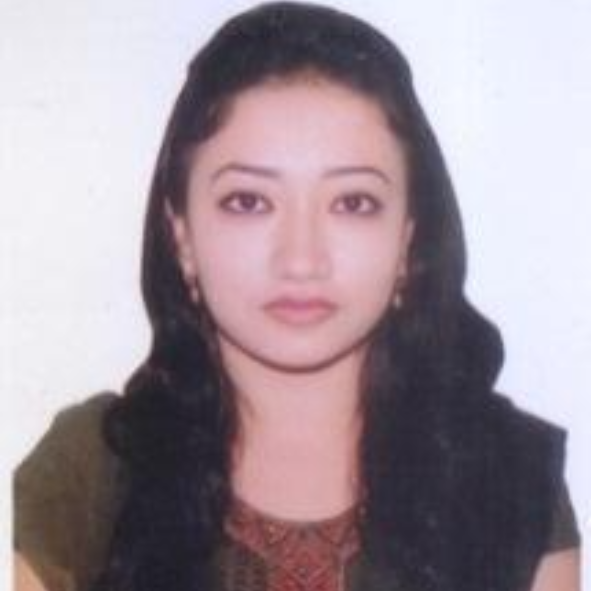International Journal of Image, Graphics and Signal Processing (IJIGSP)
IJIGSP Vol. 13, No. 2, 8 Apr. 2021
Cover page and Table of Contents: PDF (size: 1914KB)
Medical Image Denoising Techniques against Hazardous Noises: An IQA Metrics Based Comparative Analysis
Full Text (PDF, 1914KB), PP.25-43
Views: 0 Downloads: 0
Author(s)
Index Terms
Medical imaging, Image denoising techniques, US, CT, MR, Speckle, Salt and Pepper, Poisson, Gaussian, IQA metrics.
Abstract
Medical imaging has become a vital part of the early detection, diagnosis, and treatment of many diseases. That’s why image denoising is considered as a crucial pre-processing step in medical imaging to restore the original image from its noisy circumstance without losing image features, such as edges, corners, and other sharp structures. Ultrasound (US), Computed Tomography (CT), and Magnetic Resonance (MR) are the most widely used medical imaging techniques that are often corrupted by hazardous noises, namely, speckle, salt and pepper, Poisson, and Gaussian. To remove noises from medical images, researchers have proposed several denoising methods. Each method has its assumptions, merits, and demerits. In this paper, a detailed comparative analysis of different denoising filtering techniques, for example, median, Wiener, mean, hybrid median, Gaussian, bilateral, non-local means, and anisotropic diffusion are performed based on four widely-used image quality assessment (IQA) metrics, such as Root Mean Squared Error (RMSE), Peak Signal to Noise Ratio (PSNR), Mean Absolute Error (MAE), and Structural Similarity Index (SSIM). The results obtained in this present work reveal that Gaussian, median, anisotropic diffusion, and non-local means filtering methods perform extraordinarily to denoise speckle, salt and pepper, Poisson, and Gaussian noises, respectively, from all US, CT, and MR images.
Cite This Paper
Shakil Mahmud Boby, Shaela Sharmin, " Medical Image Denoising Techniques against Hazardous Noises: An IQA Metrics Based Comparative Analysis", International Journal of Image, Graphics and Signal Processing(IJIGSP), Vol.13, No.2, pp. 25-43, 2021. DOI: 10.5815/ijigsp.2021.02.03
Reference
[1]D. L. Donoho, “De-noising by soft-thresholding,” IEEE Transactions on Information Theory, vol. 41, pp. 613-627, May 1995.
[2]R. D. Nowak, “Wavelet-based Rician noise removal for magnetic resonance imaging,” IEEE Transactions on Image Processing, vol. 8, pp. 1408-1419, October 1999.
[3]M. Gupta, H. Taneja, and L. Chand, “Performance enhancement and analysis of filters in ultrasound image denoising,” Procedia Computer Science, vol. 132, pp. 643–652, 2018.
[4]B. Goyall, A. Dogra1, S. Agrawal1, and B. S. Sohi, “Noise issues prevailing in various types of medical images,” Biomedical & Pharmacology Journal, vol. 11, pp. 1227-1237, September 2018.
[5]M. H. Ali, “MRI medical image denoising by fundamental filters,” SCIREA Journal of Computer, vol. 2, pp. 12-26, 2017.
[6]J. W. Goodman, “Some fundamental properties of speckle,” Journal of the Optical Society of America, vol. 66, pp. 1145-1150, November 1976.
[7]C. B. Burckhardt, “Speckle in ultrasound B-mode scans,” IEEE Transactions on Sonics and Ultrasonics, vol. 25, pp. 1-6, January 1978.
[8]J. Sanches, J. Nascimento, and J. Marque, “Medical image noise reduction using the Sylvester-Lyapunov equation,” IEEE Transactions on Image Processing, vol. 17, pp. 1522-1539, September 2008.
[9]W. R. Hedrick and D. L. Hykes, “Image and signal processing in diagnostic ultrasound imaging,” Journal of Diagnostic Medical Sonography, vol. 5, pp. 231-239, September 1989.
[10]J. G. Abbott and F. L. Thurstone, “Acoustic speckle: Theory and experimental analysis,” Ultrasonic Imaging, vol. 1, pp. 303-324, October 1979.
[11]M. Diwakar and M. Kumar, “A review on CT image noise and its denoising,” Biomedical Signal Processing and Control. Vol. 42, pp. 73-88, April 2018.
[12]M. Y. Jabarulla and H. N. Lee, “Computer aided diagnostic system for ultrasound liver images: A systematic review,” Optik, vol. 140, pp. 1114-1126, July 2017.
[13]A. Lopes, R. Touzi, and E. Nezry, “Adaptive speckle filters and scene heterogeneity,” IEEE Transactions on Geoscience and Remote Sensing, vol. 28, pp. 992-1000, November 1990.
[14]J. S. Lee, “Digital image enhancement and noise filtering by use of local statistics,” IEEE Transactions on Pattern Analysis and Machine Intelligence, vol. 2, pp. 165-168, March 1980.
[15]D. T. Kuan, A. A. Sawchuk, T. C. Strand, and P. Chavel, “Adaptive noise smoothing filter for images with signal-dependent noise,” IEEE Transactions on Pattern Analysis and Machine Intelligence, vol. 7, pp. 165-177, March 1985.
[16]R. C. Gonzalez and R. E. Woods, Digital Image Processing, 3rd ed., Pearson Education Inc., London, UK, 2000.
[17]J. S. Goldstein, I. S. Read, and L. L. Scharf, “A multistage representation of the Wiener filter based on orthogonal projections,” IEEE Transactions on Information Theory, vol. 44, pp. 2943-2959, November 1998.
[18]R. Maini and H. Aggarwal, “Performance evaluation of various speckle noise reduction filters on medical images,” International Journal of Recent Trends in Engineering, vol. 2, pp. 22-25, December 2009.
[19]A. Achim, A. Bezerianos, and P. Tsakalides, “Novel Bayesian multiscale method for speckle removal in medical ultrasound images,” IEEE Transactions on Medical Imaging, vol. 20, pp. 772-783, August 2001.
[20]Z. J. Chen and C. H. Y. Chen, “Efficient statistical modeling of wavelet coefficients for image denoising,” International Journal of Wavelets, Multiresolution and Information Processing, vol. 7, pp. 629-641, September 2009.
[21]L. Rubin, S. Osher, and E. Fatemi, “Nonlinear total variation based noise removal,” Physica, vol. 60, pp. 259-268, November 1992.
[22]P. Perona and J. Malik, “Scale-space and edge detection using anisotropic diffusion,” IEEE Transactions on Pattern Analysis and Machine Intelligence, vol. 12, pp. 629-639, July 1990.
[23]A. Buades, B. Coll, and J. M. Morel, “A review of image denoising algorithms, with a new one,” Multiscale Model Simulation, vol. 4, pp. 490-530, January 2005.
[24]C. Tomasi, and R. Manduchi, “Bilateral filtering for gray and color images,” Sixth International Conference on Computer Vision (IEEE Cat. No.98CH36271), Bombay, India, pp. 839-846, 1998.
[25]P. Hiremath, P. T. Akkasaligar, and S. Badiger, “Removal of Gaussian noise in despeckling medical ultrasound images,” International Journal of Computer Science and Applications, vol. 1, pp. 25-35, July 2012.
[26]S. Wang, T. Z. Huang, X. L. Zhao, J. J. Mei, and J. Huang, “Speckle noise removal in ultrasound images by first and second-order total variation,” Springer, vol. 78, pp. 513-533, August 2018.
[27]M. Y. Jabarulla and H. N. Lee, “Speckle reduction on ultrasound liver images based on a sparse representation over a learned dictionary,” Applied Sciences, vol. 8, pp. 903, May 2018.
[28]Z. Wang and E. P. Simoncelli, “Reduced-reference image quality assessment using a wavelet-domain natural image statistic model,” Proc. SPIE 5666, Human Vision and Electronic Imaging X, pp. 149-159, March 2005.
[29]Z. Wang and H. R. Sheikh, “Image quality assessment: From error visibility to structural similarity,” IEEE Transactions on Image Processing, vol. 13, pp. 600-612, April 2004.
[30]U. Sara, M. Akter, and M. S. Uddin, “Image quality assessment through FSIM, SSIM, MSE, and PSNR – A comparative study,” Journal of Computer and Communications, vol. 7, pp. 8-18, January 2019.
[31]M. V. Sarode and P. R. Deshmukh, “Reduction of speckle noise and image enhancement of images using filtering technique,” International Journal of Advancement in Technology, vol. 2, pp. 30-38, January 2011.
[32]R. H. Chan, C, W. Ho, and M. Nikolova, “Salt and pepper noise removal by median type noise detectors and detail-preserving regularization,” IEEE Transactions on Image Processing, vol. 14, pp. 1479-1485, November 2005.
[33]D. M. Sugantharathnam and D. Manimegalai. “Removal of Poisson noise in medical images using FDCT integrated with Rudin-Osher_Fatemi model.” Biomedical Engineering: Applications, Basis and Communications, vol. 26, pp. 1450078, December 2014.
[34]A. K. Boyat and B. K. Joshi, “A review paper: Noise models in digital image processing,” Signal & Image Processing: An International Journal (SIPIJ), vol.6, April 2015.
[35]J. Jyoti and R. Shastri, “A study of speckle noise reduction filters,” Signal & Image Processing: An International Journal (SIPIJ), vol. 6, pp. 71-80, June 2015.
[36]S. Garg, R. Vijay, and S. Urooj, “Statistical approach to compare image denoising techniques in medical MR images,” Procedia Computer Science, vol. 152, pp. 367-374, January 2019.
[37]B. Deepa and M. G. Sumithra, “Comparative analysis of noise removal techniques in MRI brain images,” 2015 IEEE International Conference on Computational Intelligence and Computing Research (ICCIC), Madurai, pp. 1-4, 2015.
[38]Y. Yu and S. T. Acton, “Speckle reducing anisotropic diffusion,” IEEE Transactions on Image Processing, vol. 11, pp. 1260-1270, November 2002.

